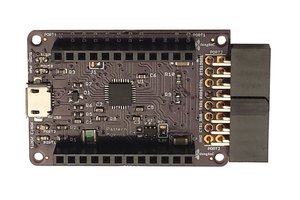The board contains minimum amount of elements only to get 2 uart ports running. The only signals connected are TX, RX and GND as the other old pins are never used these days anyways. This project is a great deal if one application uses more than 1 serial port (For example traces and bootloader).
Many different cables can be made for this board depending on the application, for example a standard DB9 male one.
In the future I am considering trimming it a bit:
- Getting rid of the USB A plug and create a USB plug shaped from PCB instead. That would also allow me to drop protection resistor and capacitor.
- Making the board more narrow and placing components on both side of the PCB.
The PCB is easily placable in a thermo-tube so no need for the casing.
2 boards were already soldered and tested. They work without any problems.
Dual RS232 to USB Converter
Very simple, pendrive size, zero programming double RS232 via USB
 Łukasz Przeniosło
Łukasz Przeniosło



 Sven Gregori
Sven Gregori
 Thomas Bladykas
Thomas Bladykas
 Jakob Faltisek
Jakob Faltisek
 Pattern Agents
Pattern Agents
DTR and RTS stand for Data Terminal Ready, and Ready To Send. It's used to control the flow of data between two devices. Think of DTR as "hey I'm ready" and RTS as "Here it comes..." signals for serial communications. So if we were to think negatively, DTR is a hold off signal (wait a minute) and RTS is a busy signal. Ifn I remember correctly, these signals were called flow control signals.